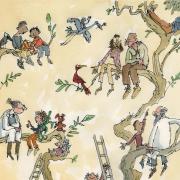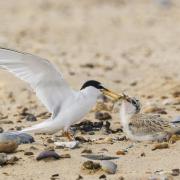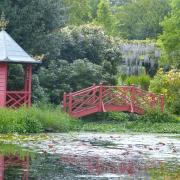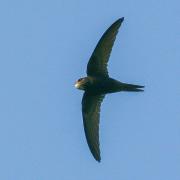When putting up your decorations or writing your Christmas cards, have you ever wondered why we associate Robins with Christmas? Maybe you’ve always wondered where ‘the Holly and the Ivy’ came from, or if partridges really do roost in pear trees?

The red, red Robin
Crowned Britain’s National Bird, the Robin is a firm favourite amongst our country’s feathered friends, especially at Christmas time.
Associated with Christmas since the 1900s, the relationship between Robins and the festive season is inspired by the bright red uniforms of Victorian postmen. As Christmas cards arrived through the post, the link was made between the familiar little bird and the spreading of Christmas cheer, which has led to them featuring on many a Christmas card ever since.
As a garden bird known to many, Robins may be seen all year round, but they are most in need of your help during the winter months when natural food supplies run low. Robins, as well as many other of the country’s garden favourites, need a little extra help in cold winter months, so we are urging everyone to keep their feeders stocked and water topped up as our feathered friends head to gardens in search of food.
If you need to top up your bird food or buy some new feeders for visiting Robins and other garden birds, why not add our online shop to your Christmas shopping list? (shopping.rspb.org.uk/home)

Deck the halls with boughs of holly…..and ivy
Used as decorations as far back as Roman times, holly branches were used long before pine trees were introduced as an English festive decoration. It was thought that the prickly leaves of holly symbolised the crown of thorns mentioned in the Bible. The bright red berries of holly provide an important source of food during the winter for birds.

Linked to ivy through pagan winter solstice traditions, both plants were used to ward off evil spirits and celebrate new growth. Ivy is great for wildlife; the berries provide vital food for birds in midwinter when they may struggle to find other food sources, its stems and evergreen leaves provide shelter and protection from harsh winter weather for birds, small mammals and insects, and it is a fantastic late season nectar source for insects.
Why not think ahead to next year's planting season and consider planting some ivy, holly or other berry bearing plants to help wildlife through future winters to come?

The 12 Days of Christmas
A popular Christmas song, the 12 Days of Christmas features several birds.
Four Calling Birds: On the fourth day of Christmas did a true love really send ‘Four calling birds’? There's a strong possibility those lyrics aren’t the original words, but the song used to say ‘Four Colly Birds’, which was an old English expression for coal black, and was a reference to our very melodic garden friend the Blackbird.
Two Turtle Doves: They were a much more common summer sight when this song was written back in 1780; UK Turtle Dove numbers have been declining rapidly in recent decades. We are working to turn the tide by leading Operation Turtle Dove, working with partners, farmers, landowners and communities to create nesting and feeding habitats in Suffolk and beyond, to help boost the Turtle Dove population. In winter months, these migratory doves are sunning themselves in Sub-Saharan Africa.

A Partridge in a Pear Tree: The first bird mentioned in the song. 'A partridge in a pear tree' isn't factually correct, as partridges nest and live on the ground, so the chances of finding them roosting in a pear tree are very slim.
In fact, over half of England’s most threatened breeding birds nest on or near the ground. Grey Partridges are on the RSPB’s red list for conservation concern, so you would be lucky to spot one.
Find out how you can help nature at rspb.org.uk/helping-nature/what-you-can-do



























